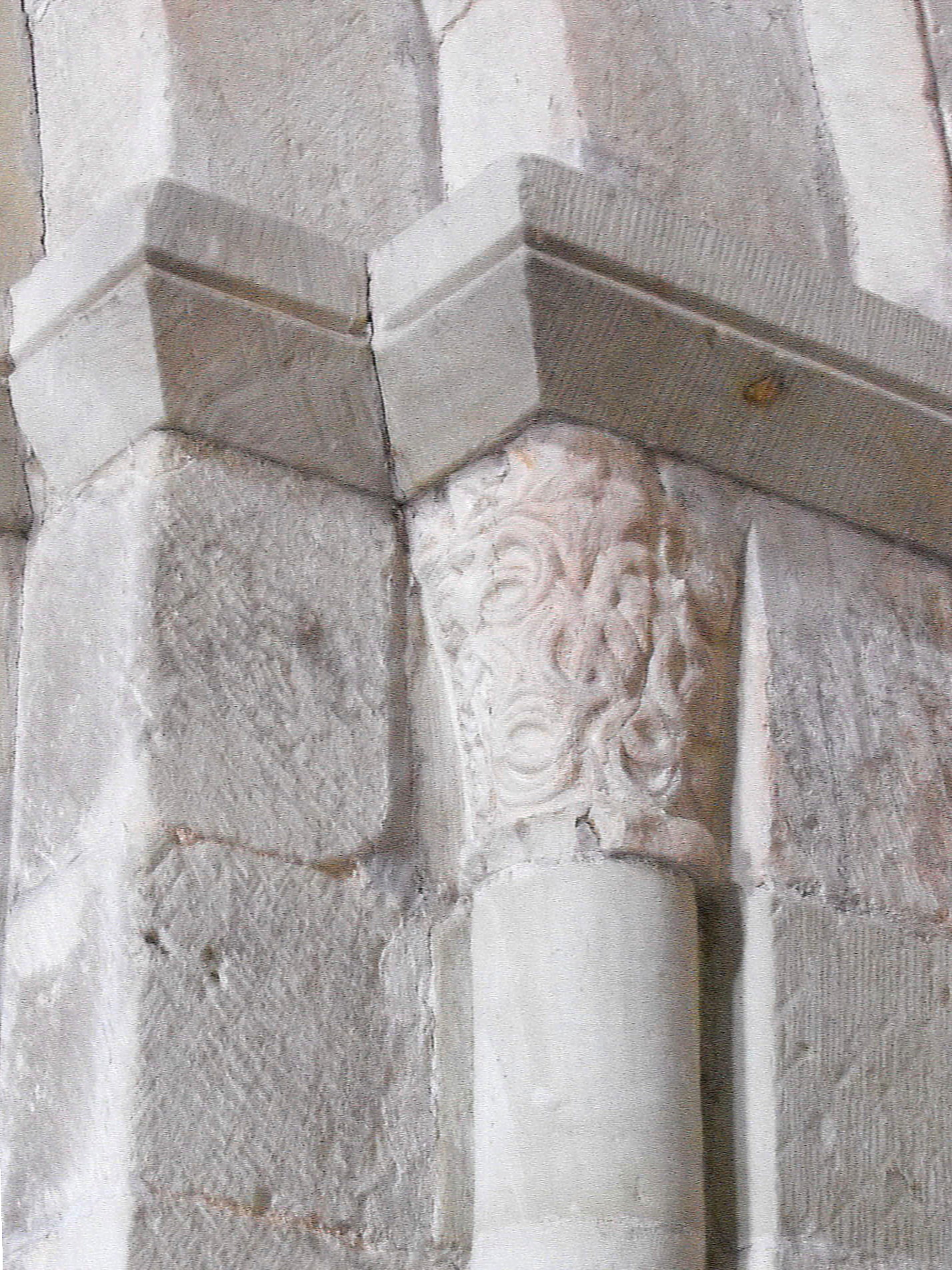|
CLEOBURY MORTIMER , St. Mary (SO 674 758), SHROPSHIRE. (Bedrock: Lower Devonian, Brownstones.)
A church with a twisted spire.
The fame of this church lies in its
twisted shingled spire, which is, perhaps, only second
The other parts of the church follow closely on in time but are somewhat disappointing due to their heavy restoration. They consist of a chancel with a N. vestry, an aisled nave with a S. porch, and an enlargement of the N. aisle to form a chapel in its two eastern bays. The building is lit by a variety of renewed lancets and mostly square-headed windows in Decorated style, although the nave clerestory is formed of five pairs of rough rectangular openings which Pevsner considered to be the cut-down lower portions of lancets (The Buildings of England: Shropshire, Harmondsworth, |Penguin, 1958, p. 106). The windowless porch is largely old, as shown by the pointed tunnel vault within, but the outer doorway, with rolls around the arch and two orders of side shafts with stiff leaf capitals, has been largely renewed save for one shaft and capital. The inner doorway (illustrated left) carries a roll with a fillet above a single order of shafts with stiff leaf capitals; the hood-mould also has a fillet and springs from king and queen head label stops. The vestry is mediaeval, cross-gabled, and probably a fifteenth century addition, and the N. chapel is independently-gabled in contrast to the western bays of the N. aisle, of lean-to construction.
Unfortunately, the restoration of the church has left the wide interior without much atmosphere but the thirteenth century chancel arch is good (seen below in the internal view from the west), being composed of three orders springing from shafts with stiff leaf capitals, the outer two of which are in shaft-rings, and with carved faces between the capitals. The five-bay aisle arcades, formed of double-flat-chamfered arches supported on circular piers with circular capitals, are consistent with a thirteenth century date. The piers to the south are a little wider than those to the north and may not be precisely contemporary. The vestry is now used as an organ chamber and opens to the chancel through a modern arch bearing three flat chamfers.
|
%20-%20cleobury%20mortimer%201.jpg)
%20-%20cleobury%20mortimer%203.jpg) in renown in England to the spire of St. Mary & All Saints', Chesterfield (Derbyshire).
The reason for the twisting here appears to have been a combination of wet
rot at the base and warping of the timbers above. The structure is
believed to date from the fourteenth century while the origins of the
tower below go back to the twelfth, as shown by the now largely reconstructed round arch to the nave (illustrated left),
composed today of four unmoulded orders but, to judge from appearances,
perhaps originally of just two. They all rest on
rectangular
in renown in England to the spire of St. Mary & All Saints', Chesterfield (Derbyshire).
The reason for the twisting here appears to have been a combination of wet
rot at the base and warping of the timbers above. The structure is
believed to date from the fourteenth century while the origins of the
tower below go back to the twelfth, as shown by the now largely reconstructed round arch to the nave (illustrated left),
composed today of four unmoulded orders but, to judge from appearances,
perhaps originally of just two. They all rest on
rectangular
 abaci with chamfered under-edges but the outer order is
supported by a pair of genuine Norman shafts with capitals carved with scrollwork.
(See the photograph, right,
showing the capital to the north.) The rest of the tower is thirteenth century in
style (i.e. Early English) for the windows
are pointed and the bell-openings consist on each side of a pair of lancets separated by a shaft.
Perhaps the implication is that construction of the tower began at the end
of the twelfth century but that most of the work was done in the early
thirteenth, possibly following a short interval. The tower rises in
four stages, supported by shallow clasping buttresses to the lower two.
abaci with chamfered under-edges but the outer order is
supported by a pair of genuine Norman shafts with capitals carved with scrollwork.
(See the photograph, right,
showing the capital to the north.) The rest of the tower is thirteenth century in
style (i.e. Early English) for the windows
are pointed and the bell-openings consist on each side of a pair of lancets separated by a shaft.
Perhaps the implication is that construction of the tower began at the end
of the twelfth century but that most of the work was done in the early
thirteenth, possibly following a short interval. The tower rises in
four stages, supported by shallow clasping buttresses to the lower two.
%20-%20cleobury%20mortimer%205.jpg)
%20-%20cleobury%20mortimer%202.jpg)